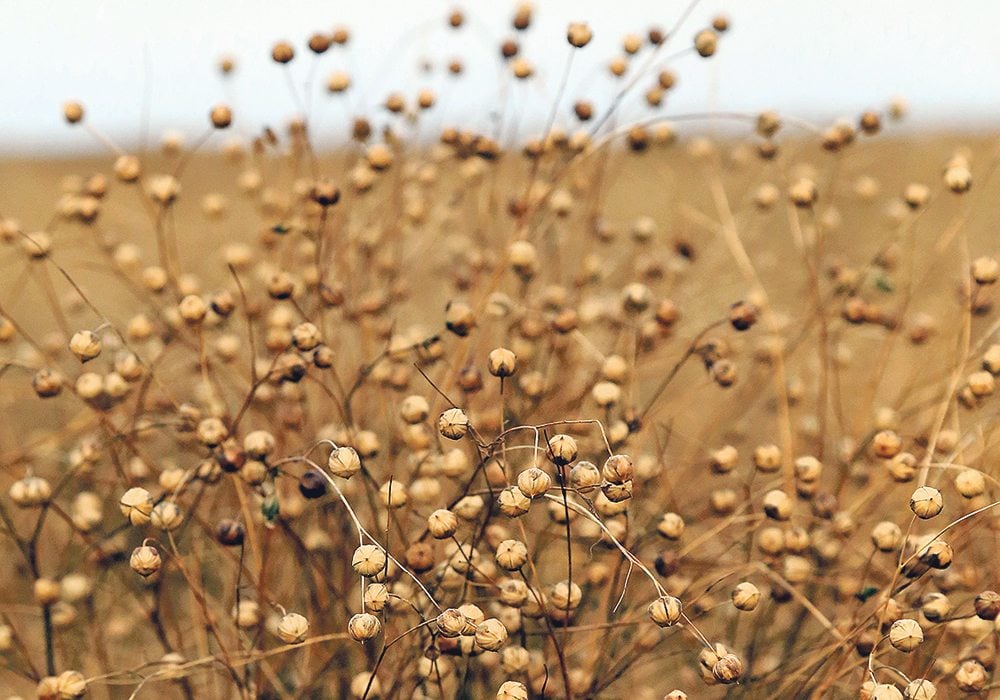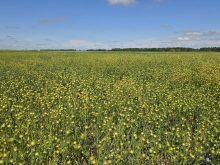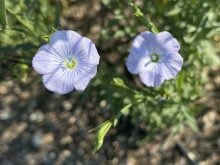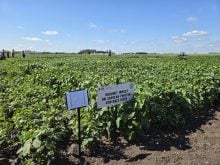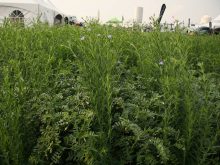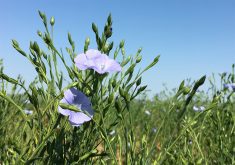Seeding rate, seeding date and proper variety selection are the three factors that can most affect flax yields
A little planning can go a long way when it comes to optimizing flax yields.
That’s because three factors that can most affect flax yield — namely seeding rate, seeding date and selecting the right variety — can be managed before any seed goes into the ground.
“We recognize that flax needs to be more competitive with other crops if we want to see flax acres maintained or increased,” said Rachel Evans, flax agronomist with the Flax Council of Canada.
“Over the last few years, we’ve been able to regain acres and production is back up … but it’s not just about acreage, it’s also about yield stability….
Read Also

Huge Black Sea flax crop to provide stiff competition
Russia and Kazakhstan harvested huge flax crops and will be providing stiff competition in China and the EU.
“So how can we (address) that year-to-year (yield) fluctuation that we sometimes see in flax?”
Evans was a featured speaker at a Saskatchewan oilseed producers meeting held recently in North Battleford, Sask.
During her presentation, she said overall flax yield is a function of three variables: plant density, bolls per plant and seeds per boll.
Regardless of management, seeds per boll is a relatively static figure, she said.
A typical boll contains six to 10 flax seeds, rarely less and never more. With that in mind, growers seeking consistently higher flax yields should focus on establishing optimal plant densities and using agronomic practices that lead to more bolls per plant.
For example, if a grower assumes an average of eight seeds per boll, then a flax field that has a plant density of 300 plants per sq. metre and 10 bolls per plant will produce a crop that yields about 21 bushels per acre, which is roughly in line with Canada’s average flax yield.
But if plant density is increased to 350 plants per sq. metre, and each plant produces an average of 15 bolls, overall yields will increase to 36 bu. per acre, again based on an average of eight seeds per boll. The additional 15 bu. per acre goes a long way toward making flax profitable.
To achieve consistently higher flax yields, growers should pay attention to plant densities.
Yield data compiled over the past 15 years in Saskatchewan and Alberta shows that optimal densities are normally in the range of 300 to 400 plants per sq. metre (about 30 to 40 plants per square foot).
Lower densities can result in a slight increase in boll formation, Evans said.
Higher densities typically increase the risk of lodging and disease. There is no consistent benefit to be realized by striving for plant densities of more than 400 per sq. metre.
Growers should also use an accurate germination number based on recent germ tests and assume a realistic seedling survival rate.
Seedling survival depends on a variety of factors, including the type of seeding equipment being used, soil temperatures, seed bed conditions, moisture and disease pressure.
Evans suggested starting with a target seedling survival rate of 50 to 60 percent.
Alberta Agriculture has a seeding rate calculator to help determine seeding rates required to achieve optimal plant densities at bit.ly/2C6ic7a.
Variety selection is also important.Evans said the Saskatchewan Seed Guide is a useful tool to ensure proper varietal selection.
The yellow pages of the annual seed guide provide head-to-head yield comparisons of all the registered flax varieties available, based on multiple-site-years of data.
The guide also presents data on lodging ratings, disease ratings and other criteria.
Beginning in 2018, the check variety used as a benchmark in flax co-operative trials will be switched from CDC Bethune to CDC Glas.
“To me, that shows the confidence that the industry has in this variety,” Evans said.
Other newer varieties that typically out-yield CDC Bethune in Saskatchewan’s brown and dark brown soil zones include CDC Sanctuary, CDC Sorrel and CDC Neela.
Research has also shown that flax yields are more likely to decline sharply in fields sown after the fourth week in May.
Typically, flax crops sown in the second or third week of May are most likely to reach their maximum yield potential.
Seeding date and its correlation to heat stress is a key factor that will determine the average number of bolls per plant.
Another key factor is soil fertility.
Take a soil sample prior to seeding, have it analyzed and use a target flax yield to determine appropriate input levels.
The International Plant Nutrition Institute suggests that a flax field that yields 32 bu. per acre will remove 80 lb. of nitrogen per acre, 22 lb. of phosphorus, 19 lb. of potassium and six lb. of sulfur.
Typically, flax crops that have access to higher rates of nitrogen will require more days to reach maturity.
Higher nitrogen rates could also result in greater disease pressure.
Fertilizer placement is also important.
Banding is typically recommended for best results.




